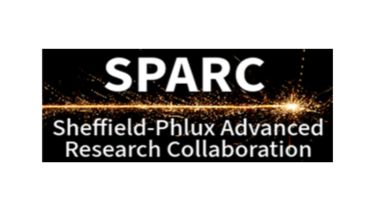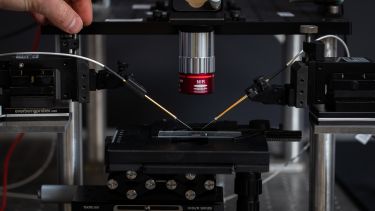- The new prosperity partnership between the University of Sheffield and Phlux Technology, titled SPARC (Sheffield-Phlux Advanced Research Collaboration) will focus on improving communication systems through infrared sensors
- SPARC will aim to deliver a new class of semiconductor infrared sensors, with sensitivity ten times better than current sensors, and faster speeds for data transmission
- This has the potential to improve the resilience of urban communication systems and reduce digital poverty
Access to data in our increasingly connected world has never been more important. Recent times have seen an exponential increase in data, which has led to the demand for access and transmission speeds not being met. For rural communities in particular, this could limit access to information and even job opportunities.
Infrared light is currently used to send large amounts of data at a high speed, over optical links. At the end of each optical link, an infrared sensor will detect the light, converting the optical signals into electrical currents. However these important semiconductor infrared sensors have hit a performance plateau. The new partnership between the University of Sheffield and Phlux Technology (a spin-out company from the Department of Electronic and Electrical Engineering) aims to deliver a new class of affordable infrared sensors, with significantly better performance than current sensors.
The first application SPARC will target is high-speed communication systems based on optical fibres. The second application is free-space, km-range optical communication links. These communication links transmit high-speed data over the air and avoid the expensive installation of optical fibres. The integration of this application will increase the resilience of urban communication systems, and reduce digital poverty in less populated regions by improving access to high-speed communication links.
In all of these communication systems, the data transmission speed and the communication link distance are important factors determined by the infrared sensors. By providing the much-needed solution to improve optical communication systems, the new infrared sensors from the partnership have the potential to improve the resilience of UK infrastructures and security, as well as enabling improvements for UK-based instrument manufacturers.
The SPARC partnership is one of nine new regional partnerships awarded funding from the Engineering and Physical Sciences Research Council (EPSRC) between universities and manufacturing businesses which will address industry-driven challenges and the development of new technologies.
Dr Andrew Bourne, Executive Director of Partnerships at EPSRC said:
“I am excited to announce the EPSRC support of a number of ambitious early-stage academic-business research collaborations which complement the established EPSRC Prosperity Partnerships initiative.”
Professor Jo Shien Ng, lead for SPARC from the University of Sheffield, has commented on the news:
“Our collaborations with Phlux have been very fruitful, generating joint publications and stimulating more research ideas. We are keen to continue collaborating with Phlux, so the EPSRC award has come at just the right time for us to develop our relationship into a strategic research partnership.”
About Phlux
Phlux Technology was founded by Ben White (CEO), Professor Jo Shien Ng and Professor Chee Hing Tan, who met at the University of Sheffield where they researched novel semiconductor materials and devices for infrared detection.
Phlux is based in one of the world’s leading centres for III-V semiconductor research with world class research and facilities at the University of Sheffield, including The National Epitaxy Facility, which was awarded £12 million in funding from UK Research and Innovation (UKRI) to support the UK’s position as a global power in semiconductor R&D last year.




